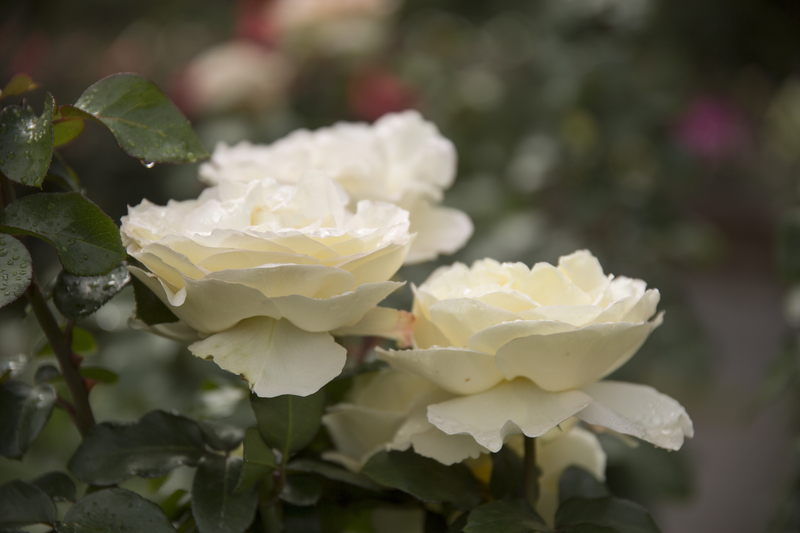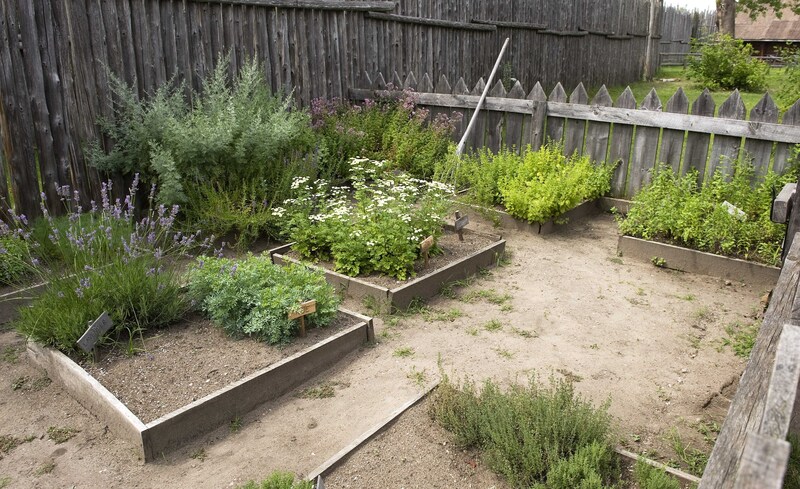The Science Behind Successful Vertical Gardens
Posted on 29/05/2025
The Science Behind Successful Vertical Gardens
Vertical gardens--also known as living walls or green walls--have revolutionized the way we integrate nature into urban spaces. As the popularity of these lush, vertical oases continues to grow, understanding the science behind successful vertical gardens is essential for both enthusiasts and professionals. This comprehensive article explores the principles, innovations, and best practices that lead to thriving vertical gardens, offering invaluable insights whether you're a homeowner, urban developer, or eco-conscious gardener.

What Are Vertical Gardens?
Vertical gardens are plants grown on vertically suspended panels instead of traditional horizontal plots. These gardens make optimal use of vertical space, facilitating lush greenery in places with limited ground area, such as apartments, offices, and highly populated urban centers. Not only do they beautify environments, but they also deliver ecological and psychological benefits through improved air quality, noise reduction, and enhanced well-being.
Brief History of Vertical Gardening
- Ancient roots in the Babylonian Hanging Gardens.
- Modern living walls pioneered by botanists like Patrick Blanc in the 1980s.
- Rapid adoption in commercial, residential, and public spaces worldwide.
The Core Science Behind Living Walls
Plant Biology and Adaptation
At the heart of successful vertical gardens lies a nuanced understanding of plant biology. Not all species are suitable for vertical orientation. Key factors include:
- Root Structure: Plants with fibrous root systems adapt better to the shallow substrates of vertical systems.
- Sunlight Requirements: Choosing shade-tolerant or partial-sun species is crucial for indoor gardens or shaded exteriors.
- Water Retention: Certain plants, like ferns and succulents, possess adaptive features for moisture conservation.
- Growth Habit: Species with compact and trailing habits create a fuller visual effect and compete less aggressively.
The Role of Photosynthesis
Photosynthesis remains the driver of plant growth everywhere--including on living walls. Effective vertical gardens are designed to maximize light exposure and airflow, supporting the plants' energy conversion processes. Techniques such as alternating plant heights, adjusting panel angles, and utilizing reflectors ensure consistent light distribution for healthy growth.
Engineering Fundamentals of Vertical Gardens
Support Structures and Mounting Systems
A thriving living wall needs a robust structural framework. The following systems are commonly used:
- Panel Systems: Pre-planted panels lock into wall frames for quick installation.
- Modular Solutions: Small units connect like building blocks for scalability and flexibility.
- Pocket Planters: Felt, cloth, or fabric pockets attached to walls--ideal for herbs or succulents.
The best systems ensure adequate space for plant roots, allow for easy maintenance, and promote even water distribution.
The Importance of Growing Mediums
Unlike traditional soil-based planting, vertical gardens rely on specialized substrates:
- Lightweight Soil Mixes: Custom blends with peat, perlite, and compost offer balance between weight and nutrition.
- Hydroponics: Plants are inserted into soilless media such as rockwool, coconut coir, or expanded clay.
- Inorganic Materials: Some advanced systems use mineral wool or foam panels, ensuring consistent structure and minimal breakdown.
Proper substrate selection is the key to consistent water retention, root aeration, and nutrient delivery--crucial components for vertical garden success.
Water Management: The Lifeblood of Green Walls
Efficient irrigation is at the heart of maintaining lush, long-lasting living walls. The scientific approach involves:
- Capillary Action: Utilizing substrates that lift water upwards through capillary forces to reach all plant roots.
- Drip Irrigation: Precision drippers supply measured water, reducing waste and preventing overwatering.
- Automated Systems: Smart sensors can detect moisture levels and trigger watering cycles accordingly.
- Integrated Drainage: Proper design ensures excess water drains away, preventing anaerobic conditions and root rot.
Many vertical gardens also incorporate rainwater collection or graywater recycling for additional sustainability.
Nutrient Delivery in Living Walls
Unlike in-ground gardens, nutrients in vertical systems can become depleted rapidly. Experts use fertigation--the process of dissolving nutrients in irrigation water--for a consistent nutrient supply. Key considerations include:
- Balance of macronutrients (N-P-K: nitrogen, phosphorus, potassium)
- Inclusion of vital micronutrients (iron, zinc, magnesium)
- pH monitoring for optimal nutrient uptake
Over-fertilization can cause salt buildup and root damage, while under-fertilization leads to poor growth and disease susceptibility. Periodic flushing prevents accumulation of harmful residues.
Plant Selection: The Backbone of Vertical Garden Success
Best Plants for Vertical Gardens
Selecting the right species is a non-negotiable aspect of the science behind successful vertical garden systems. The most robust living walls use plants that thrive under imposed conditions of limited soil depth, variable water supply, and competition for space. Top choices include:
- Ferns: Boston fern, maidenhair fern
- Sedums: Stonecrop varieties, known for drought tolerance
- Epiphytes: Air plants (Tillandsia), staghorn ferns
- Herbs: Mint, thyme, oregano--great for kitchen gardens
- Ornamentals: Golden pothos, philodendron, spider plant
*Local climate, light levels, and micro-environmental factors ultimately guide the best plant palette for any vertical garden installation.*
Companion Planting and Biodiversity
A truly thriving vertical garden leverages plant synergy:
- Diversity of species: Protects against pests and disease.
- Complementary growth rates: Ensures no single species dominates the system.
- Layering effect: Creates microhabitats for beneficial insects and pollinators.
This approach results in a more resilient and aesthetically pleasing living wall.
Environmental Factors Impacting Vertical Garden Success
Light, Temperature, and Humidity Control
The science behind successful living walls also involves managing environmental factors. Light intensity and duration affect photosynthesis rates, influencing how fast and healthy plants grow.
- Indoor living walls: Benefit from supplemental grow lights and climate control.
- Outdoor vertical gardens: May require strategic placement to avoid harsh winds and excessive sun.
- Humidity: Should be monitored, especially indoors, as low humidity leads to moisture stress in plants.
Temperature swings may be mitigated by adequate insulation or the use of resilient plant species.
Pest and Disease Management
The dense planting of green walls can create microclimates where pests and diseases thrive. Sustainable vertical garden maintenance includes:
- Integrated Pest Management (IPM): Using beneficial insects, environmental controls, and organic options before chemicals.
- Regular inspection: Early detection and targeted intervention for outbreaks.
- Sanitation: Removing dead leaves and ensuring airflow reduce disease risk.
Benefits of Well-Designed Vertical Gardens
Environmental and Urban Impact
The benefits of living wall systems go far beyond aesthetics. Key advantages include:
- Improved Air Quality: Plants filter pollutants and release oxygen, creating healthier environments.
- Energy Savings: Living walls insulate buildings, reducing heating and cooling costs.
- Noise Reduction: Green walls absorb and deflect urban sounds.
- Biodiversity Enhancement: Create habitats for birds, insects, and microorganisms.
- Urban Heat Island Mitigation: Greenery cools cities, fighting climate change impacts.
Psychological and Health Benefits
Numerous studies confirm the restorative value of being around plants--living walls reduce stress, boost productivity, and offer therapeutic benefits. For offices, schools, and healthcare centers, vertical gardens become vital elements of biophilic design.
Best Practices for Long-Term Vertical Garden Success
Planning and Installation
The science behind successful vertical gardens starts long before planting. Essential steps include:
- Site Analysis: Evaluate sun, wind, water availability, and wall strength.
- Design Customization: Select system type, species, and layout suitable for site conditions and desired aesthetics.
- Structural Preparation: Install waterproof barriers and support structures prior to planting.
Regular Maintenance
Long-term vitality of living walls depends on committed upkeep:
- Watering and feeding schedules tailored to plant needs and system capacity.
- Trimming and pruning to prevent overgrowth and maintain design integrity.
- Health monitoring for signs of pests, disease, or nutrient deficiencies.
- System checks to ensure irrigation, drainage, and structural elements remain in top condition.
Professional maintenance or homeowner diligence is the difference between showpiece living walls and failed projects.

Innovations and Future Directions in Vertical Gardening Science
The field of vertical horticulture continues to innovate. Recent advances include:
- Smart vertical garden systems that use IoT sensors for remote monitoring and automated adjustments.
- Sustainable materials such as recycled plastics, biodegradable panels, and water-efficient substrates.
- Integration with urban agriculture, allowing dense food production in city centers.
- Advanced AI: Analyzing data to optimize plant selection and maintenance routines.
These trends suggest vertical gardens will only become more sophisticated and impactful as urbanization continues.
Conclusion: Harnessing the Science for Your Green Wall Success
Understanding the science behind successful vertical gardens is the key to creating vibrant, resilient, and beneficial living walls. By focusing on plant selection, engineering solutions, proper nutrition, environmental factors, and ongoing care, anyone can enjoy the ecological, aesthetic, and health-perks of vertical gardening. Whether for home, office, or cityscape, these living masterpieces stand at the crossroads of design, ecology, and technology--bringing the future of sustainable urban living to new heights.
Ready to start your own vertical garden? Follow the principles above to ensure your green wall thrives for years to come!

